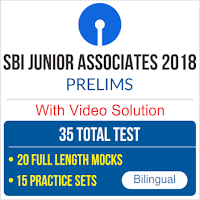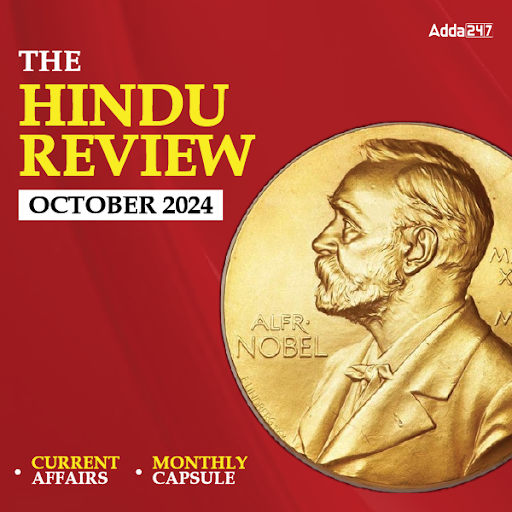Dear Aspirants,
Reasoning Ability is an onerous section. With the increasing complexity of questions, it becomes hard for one to give it a cold shoulder. The only way to make the grade in this particular section in the forthcoming SBI PO Prelims and other banking exams is to practice continuously with all your heart and soul. And, to let you practice with the best of latest pattern questions, here is the Adda247 Reasoning Quiz with the exact same pattern of questions that are being asked in the exams.
Following the study plan for SBI PO Preliminary Examination 2018, the third week starts with practice questions on Puzzles & Seating Arrangement and Syllogism. To ensure proper preparation of the section we advise you to go through all the questions sincerely and try to attempt each one of them. Afterward, match your solutions and the approach with the one that would be provided later. Practice more and more questions on the same section to enhance your grip over the topics. Following is the Reasoning Ability quiz to help you practice with the best of latest pattern questions.
Directions (1-5) Study the following information to answer the given questions:
Eleven persons A, B, C, D, E, F, G, H, I, J, K are sitting in such a way that some are facing North and some of them are facing south. Not more than two consecutive persons face same direction. No two persons sit adjacent to each other according to the English alphabet (i.e. B does not sit adjacent to A and C and so on).
D sits 2nd from one of the ends and faces south. Four persons sit between D and J. Persons at both the ends face same direction as C, who is sitting exactly in the middle of the row. Number of the persons sitting to the right of C is one more than those sitting right of J. Both C and J face opposite direction. Two persons sit between J and K, who faces same direction as C. E and H are neighbors of each other. Both G and I are immediate right to each other, one of them is next to C. Four persons sit between E and G. Immediate neighbors of D face same direction. A is not neighbor of D. Not more than four persons face south.
Q1. How many persons in the above arrangement are facing north?
(a) 7
(b) 6
(c) 5
(d) 8
(e) None of these
Q2. Who among the following represents the pair of persons who are immediate neighbor of B?
(a) A-B
(b) G-D
(c) H-D
(d) J-C
(e) None of these
Q3. Four of the following five forms a group, who does not belong to that group?
(a) C
(b) A
(c) B
(d) G
(e) H
Q4. Which of the following pair represents the persons sitting at the ends?
(a) D-E
(b) A-B
(c) F-A
(d) G-B
(e) A-C
Q5. Who among the following sits 5th right to H?
(a) E
(b) B
(c) F
(d) G
(e) None of these
Directions (6-10): In each of the questions below are given some statements followed by some conclusions. You have to take the given statements to be true even if they seem to be at variance with commonly known facts. Read all the conclusions and then decide which of the given conclusions logically follows from the given statements, disregarding commonly known facts. Give answer
Q6. Statements:
Some red are blue.
Some blue are green.
No green is yellow.
Conclusions:
I. Some yellow can be red.
II. No blue is yellow.
(a) Both I and II follows
(b) Either I or II follows
(c) Only II follows
(d) Neither I nor II follows
(e) Only I follows.
Q7. Statements:
No sky is star.
All star are moon.
No moon is sun.
Conclusions:
I. Some moon are not sky.
II. Some sun can be sky.
(a) Both I and II follows
(b) Either I or II follows
(c) Only II follows
(d) Neither I nor II follows
(e) Only I follows.
Q8. Statements:
Some shoes are belt.
All belt are shirt.
All shirt are pant.
Conclusions:
I. All pant being belt is a possibilities
II. Some shirts are not belt .
(a) Both I and II follows
(b) Either I or II follows
(c) Only II follows
(d) Neither I nor II follows
(e) Only I follows.
Q9. Statements:
Some salt is lemon.
All lemons are sugar.
Some sugar are water.
Conclusions:
I. Some salt can be sugar.
II. Some water is lemon.
(a) Both I and II follows
(b) Either I or II follows
(c) Only II follows
(d) Neither I nor II follows
(e) Only I follows.
Q10. Statements:
Some pen are eraser.
All eraser are pencil.
No marker is pen.
Conclusions:
I. Some pencil can be marker.
II. Some pencil are not marker.
(a) Both I and II follows
(b) Either I or II follows
(c) Only II follows
(d) Neither I nor II follows
(e) Only I follows
Directions (11-15) Study the following information to answer the given questions:
Ten persons are sitting in 2 parallel rows containing 5 persons in each row. In 1st row T, Q, R, S and P are seated and face south and in 2nd row E, D, A, B and C are seated and face north, but not necessarily in the same order. Therefore, in the given seating arrangement, each member seated in a row faces another member of the other row. They are born in different months i.e. January, April, May, June, July, August, September, October, November, December but not necessarily in the same order.
The person born in may sits diagonally opposite to the one who is born just before it, who sits at one of the ends.T sits 3rd to the right of P,who is born in November.One of them sit at the ends. The one born in September faces the one born in December. One person sits between E and D, none of them is born before September. C is to the left of A, who is born in may.B is not born in the month having 30 days. S is born in july and faces the one born in month having 31 days. R is 2nd right to Q. R doesnot face B. The one born in December is immediate left to the one born in august. T is not born in the month having 31 days. The person sitting immediate right to B is born after B and it is not E. The one who born in the month just after A sits at the end of the same row in which the person who born in December.
Q11. Who among the following faces the one born in August?
(a)R
(b) S
(c) Q
(d) T
(e) none of these
Q12. In which of the following months is R born?
(a) January
(b) April
(c) July
(d) June
(e) none of these
Q13. Which of the following represents the correct combination?
(a)D-October
(b) S-June
(c) A-July
(d) T-August
(e) none of these
Q14. In which of the following months is E born?
(a) January
(b) April
(c) July
(d) December
(e) none of these
Q15. Which of the following is not true regarding P?
(a) R sits right to P
(b) A faces P
(c) P is born in October
(d) None of them is correct
(e) All of them is correct






 The Hindu Review October 2022: Download ...
The Hindu Review October 2022: Download ...
 FCI Recruitment 2024 Notification, 15465...
FCI Recruitment 2024 Notification, 15465...
 Important Current Affairs Questions for ...
Important Current Affairs Questions for ...




